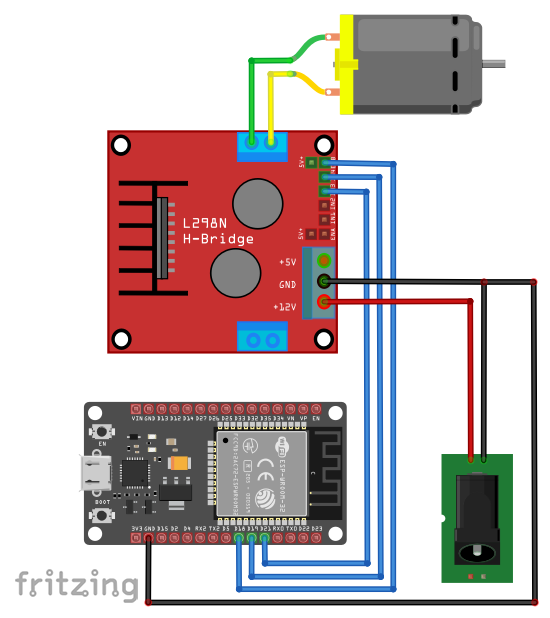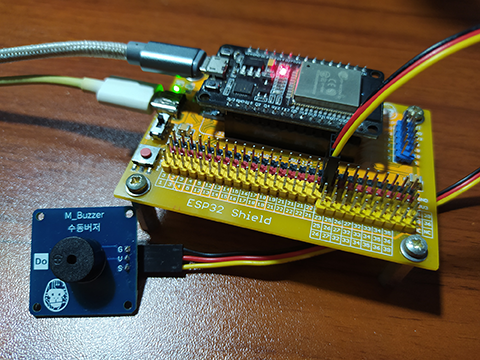005 - ESP32 MicroPython: Pulse Width Modulation
Table of Contents
In this tutorial, we will learn to use the PWM of ESP32 in MicroPython. PWM stands for Pulse Width Modulation.
CIRCUIT DIAGRAM

VIDEO DEMONSTRATION
CALL TO ACTION
If you find this tutorial helpful, please consider Subscribing to my Youtube channel by clicking this link to SUBSCRIBE to TechToTinker Youtube channel.
Thank you.
SOURCE CODE
# DC motor speed control using PWM in MicroPython
# Author: George Bantique, TechToTinker
# Date: September 13, 2020
# Load the machine module which also
# includes the pwm class
import machine
# Create the drives object for the direction
# of rotation of the DC motor
dr1 = machine.Pin(21, machine.Pin.OUT)
dr2 = machine.Pin(19, machine.Pin.OUT)
# Create the en1 object as normal GPIO
en1 = machine.Pin(18, machine.Pin.OUT)
# Create a pwm object and attach it to
# pwm drivers
pwm = machine.PWM(en1)
# Rotates the DC motor clockwise
def cw():
dr1.value(1)
dr2.value(0)
# Rotates the DC motor counter-clockwise
def ccw():
dr1.value(0)
dr2.value(1)
# Starts the pwm with a definite value
# and start the motor rotating according
# to the input argument
def start(rotation):
pwm.init(freq=1, duty=512)
if (rotation=='cw'):
cw()
elif (rotation=='ccw'):
ccw()
# Stops the pwm using pwm.deinit() function
# which dettach the pwm driver to the en1 object
# We also provide the drives pin a logic low value
def stop():
pwm.deinit()
dr1.value(0)
dr2.value(0)
×
![]()


Thank You very mutch George Bantique